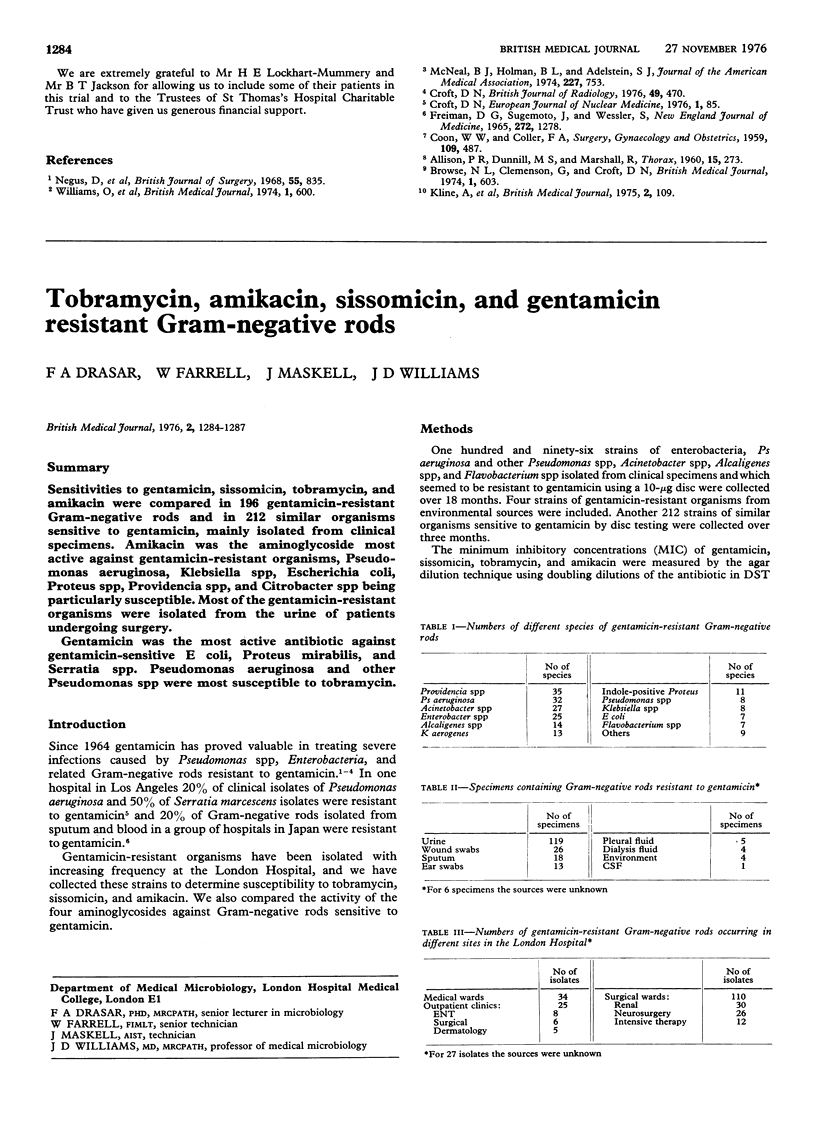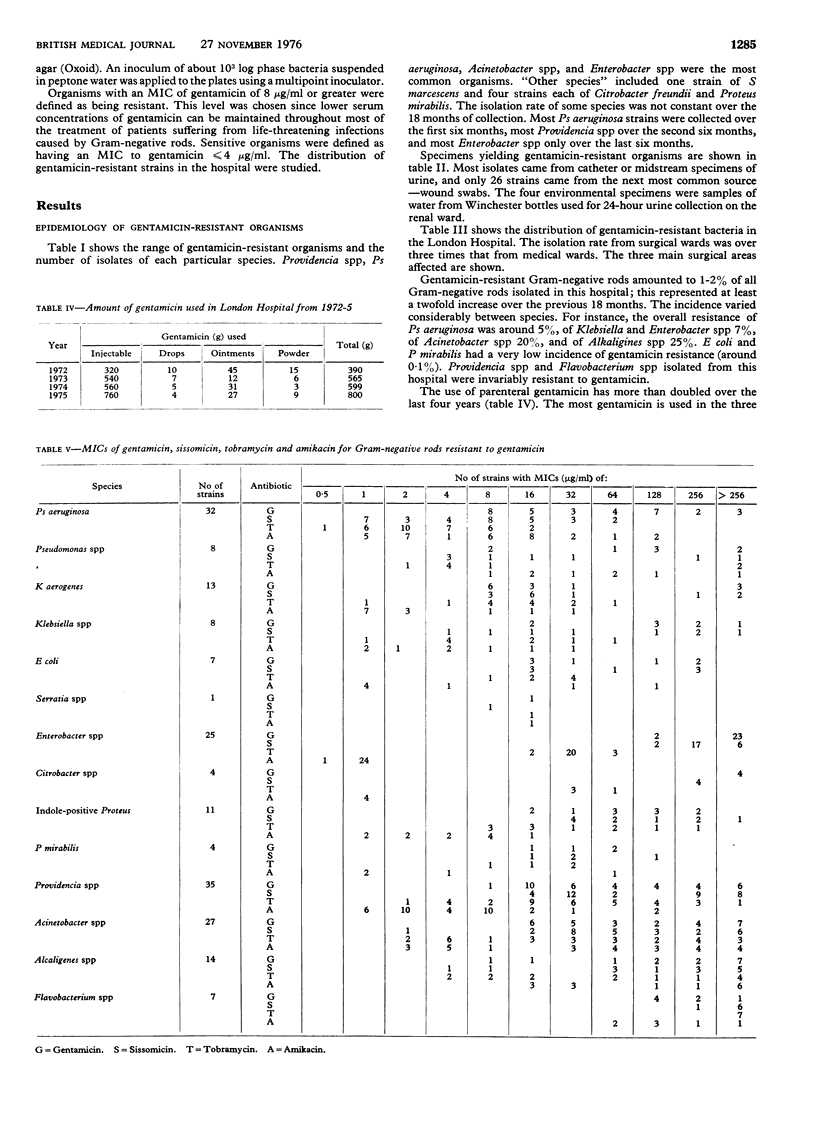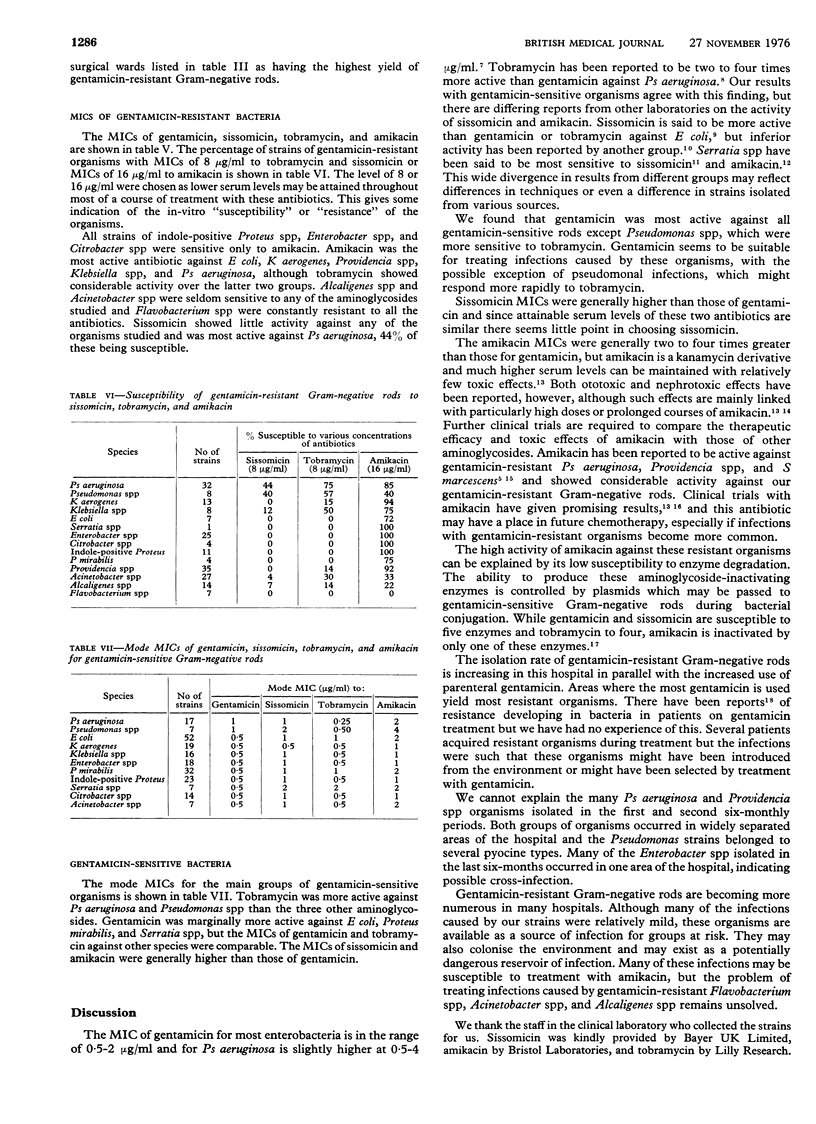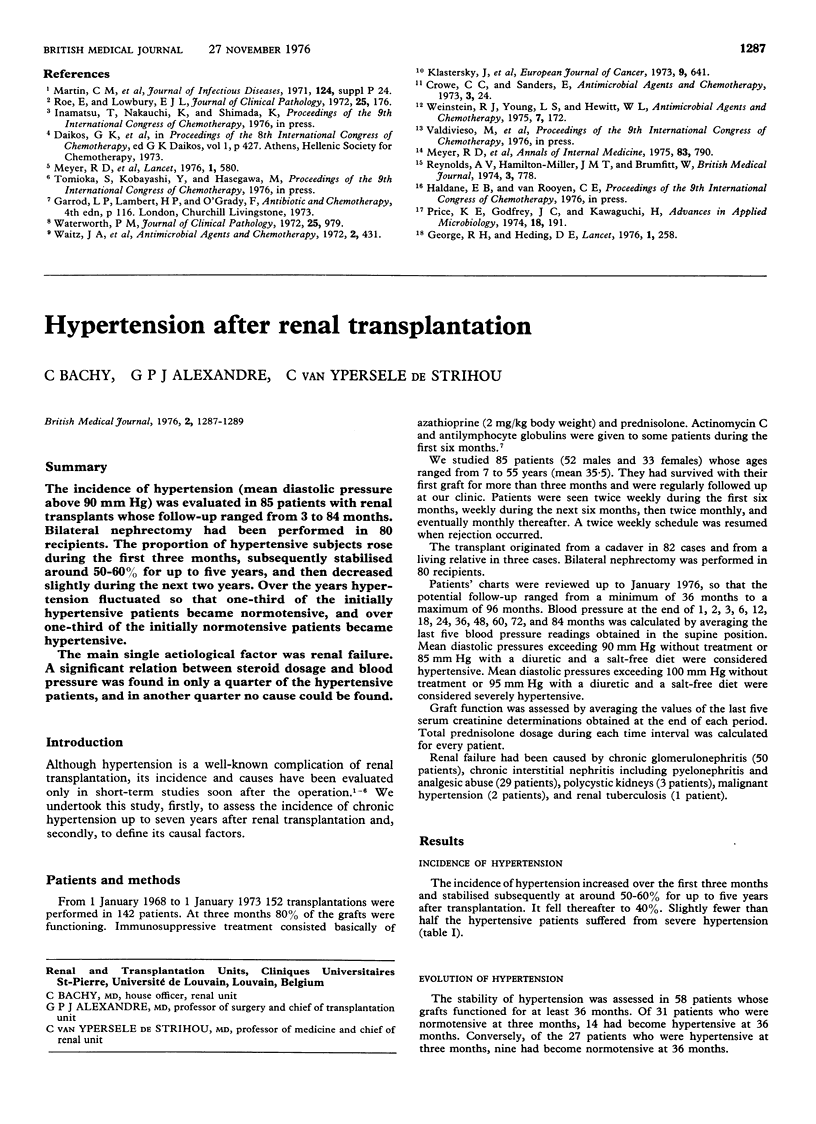Abstract
Sensitivities to gentamicin, sissomicin, tobramycin, and amikacin were compared in 196 gentamicin-resistant Gram-negative rods and in 212 similar organisms sensitive to gentamicin, mainly isolated from clinical specimens. Amikacin was the aminoglycoside most active against gentamicin-resistant organisms, Pseudomonas aeruginosa, klebsiella spp, Escherichia coli, Proteus spp, Providencia spp, and Citrobacter spp being particularly susceptible. Most of the gentamicin-resistant organisms were isolated from the urine of patients undergoing surgery. Gentamicin was the most active antibiotic against gentamicin-sensitive E coli, Proteus mirabilis, and Serratia spp. Pseudomonas aeruginosa and other Pseudomonas spp were most susceptible to tobramycin.
Full text
PDF



Selected References
These references are in PubMed. This may not be the complete list of references from this article.
- Crowe C. C., Sanders E. Sisomicin: evaluation in vitro and comparison with gentamicin and tobramycin. Antimicrob Agents Chemother. 1973 Jan;3(1):24–28. doi: 10.1128/aac.3.1.24. [DOI] [PMC free article] [PubMed] [Google Scholar]
- George R. H., Healing D. E. Letter: Gentamicin resistance. Lancet. 1976 Jan 31;1(7953):258–258. doi: 10.1016/s0140-6736(76)91391-x. [DOI] [PubMed] [Google Scholar]
- Klastersky J., Henri A., Hensgens C., Vandenborre L., Daneau D. Antipseudomonal drugs: comparative study of gentamicin, sisomicin and tobramycin in vitro and in human volunteers. Eur J Cancer. 1973 Sep;9(9):641–648. doi: 10.1016/0014-2964(73)90006-6. [DOI] [PubMed] [Google Scholar]
- Meyer R. D., Lewis R. P., Carmalt E. D., Finegold S. M. Amikacin therapy for serious gram-negative bacillary infections. Ann Intern Med. 1975 Dec;83(6):790–800. doi: 10.7326/0003-4819-83-6-790. [DOI] [PubMed] [Google Scholar]
- Meyer R. D., Lewis R. P., Halter J., White M. Gentamicin-resistant Pseudomonas aeruginosa and Serratia marcescens in a general hospital. Lancet. 1976 Mar 13;1(7959):580–583. doi: 10.1016/s0140-6736(76)90370-6. [DOI] [PubMed] [Google Scholar]
- Price K. E., Godfrey J. C. Effect of structural modifications on the biological properties of aminoglycoside antibiotics containing 2-deoxystreptamine. Adv Appl Microbiol. 1974;18(0):191–307. doi: 10.1016/s0065-2164(08)70572-0. [DOI] [PubMed] [Google Scholar]
- Reynolds A. V., Hamilton-Miller J. M., Brumfitt W. Newer aminoglycosides--amikacin and tobramycin: an in-vitro comparison with kanamycin and gentamicin. Br Med J. 1974 Sep 28;3(5934):778–780. doi: 10.1136/bmj.3.5934.778. [DOI] [PMC free article] [PubMed] [Google Scholar]
- Roe E., Lowbury E. J. Changes in antibiotic sensitivity patterns of Gram-negative bacilli in burns. J Clin Pathol. 1972 Feb;25(2):176–178. doi: 10.1136/jcp.25.2.176. [DOI] [PMC free article] [PubMed] [Google Scholar]
- Waitz J. A., Moss E. L., Jr, Drube C. G., Weinstein M. J. Comparative activity of sisomicin, gentamicin, kanamycin, and tobramycin. Antimicrob Agents Chemother. 1972 Dec;2(6):431–437. doi: 10.1128/aac.2.6.431. [DOI] [PMC free article] [PubMed] [Google Scholar]
- Waterworth P. M. The in-vitro activity of tobramycin compared with that of other aminoglycosides. J Clin Pathol. 1972 Nov;25(11):979–983. doi: 10.1136/jcp.25.11.979. [DOI] [PMC free article] [PubMed] [Google Scholar]
- Weinstein R. J., Young L. S., Hewitt W. L. Activity of three aminoglycosides and two penicillins against four species of gram-negative bacilli. Antimicrob Agents Chemother. 1975 Feb;7(2):172–178. doi: 10.1128/aac.7.2.172. [DOI] [PMC free article] [PubMed] [Google Scholar]


